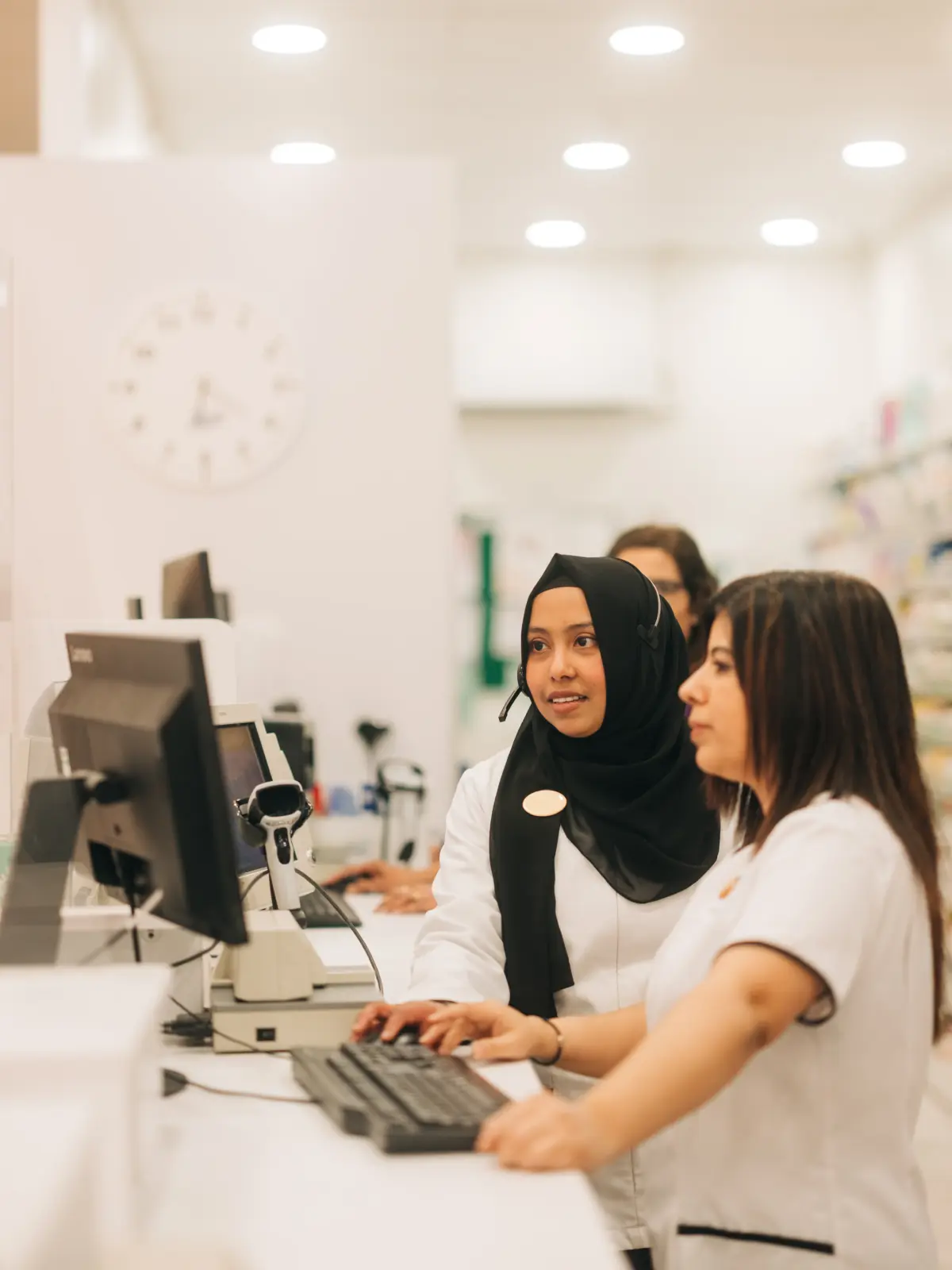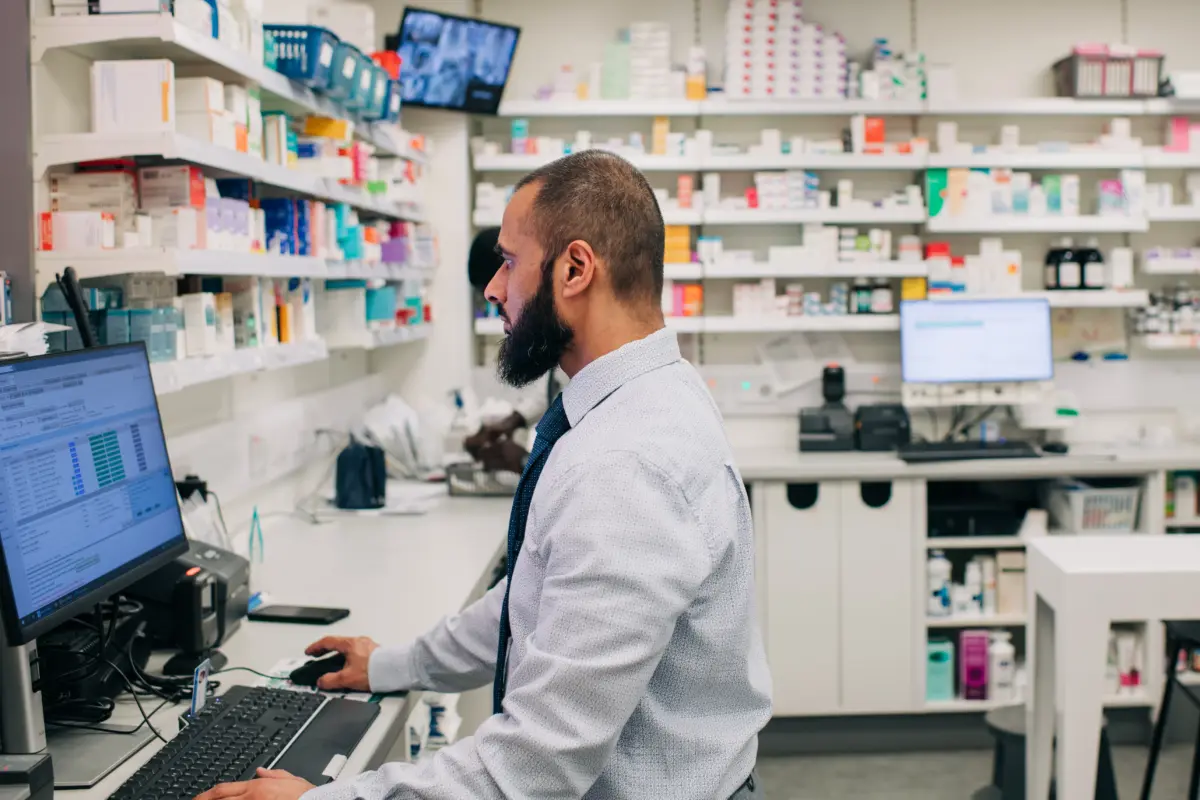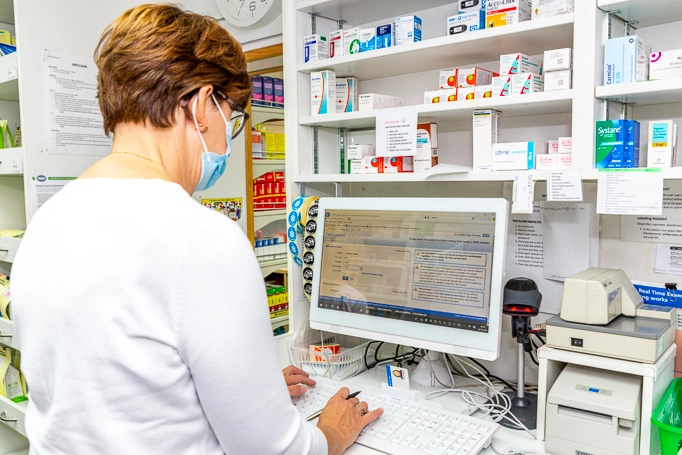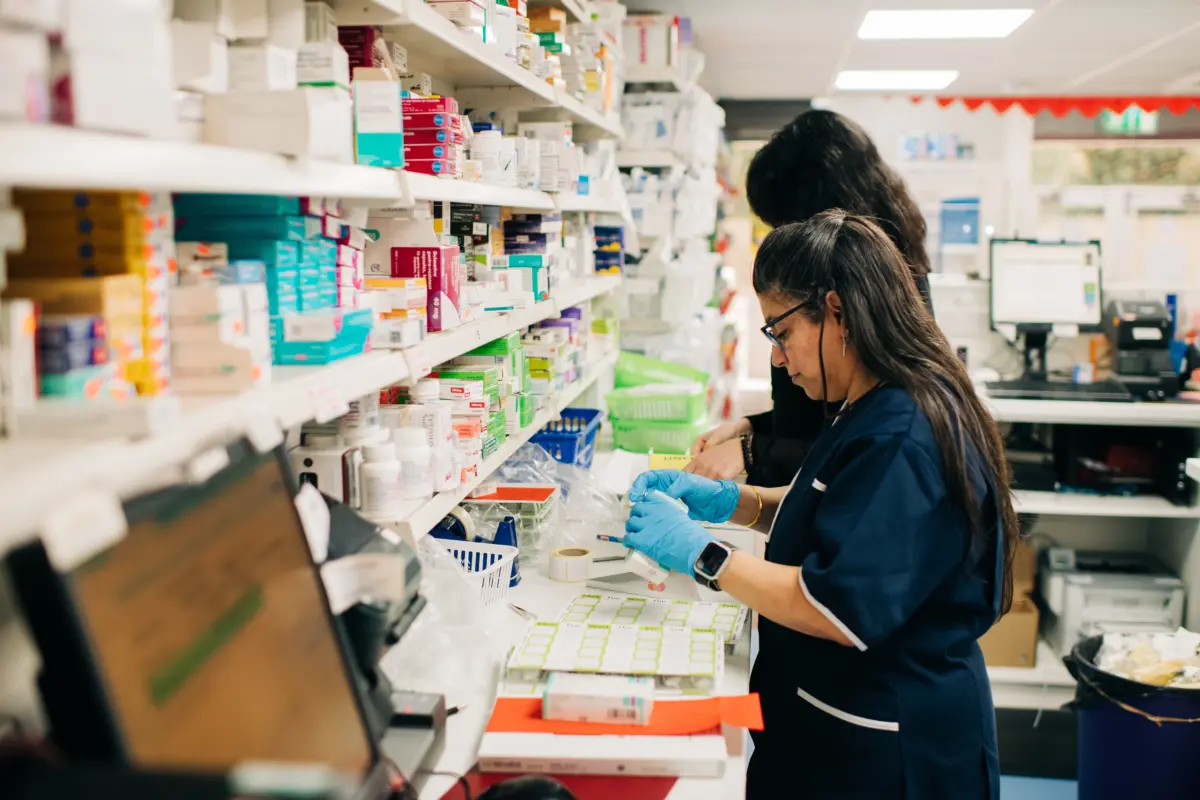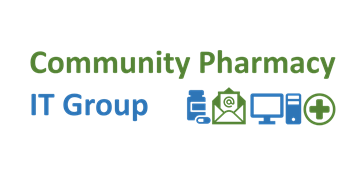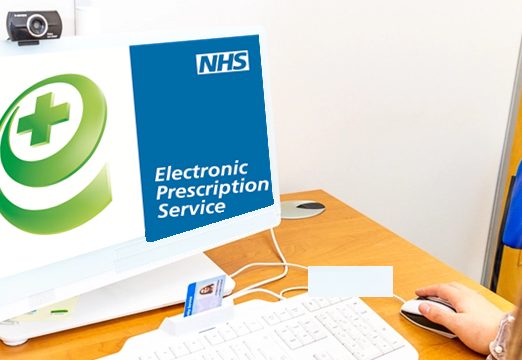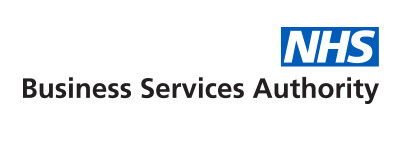GP Connect: Update Record
Published on: 5th February 2024 | Updated on: 16th June 2025
GP Connect: Update Record empowers community pharmacy professionals to share consultation summaries seamlessly and securely from their pharmacy IT system to the GP practice system. These summaries include essential details such as medications supplied.
This feature has been integrated into:
- Pharmacy CPCF services IT system suppliers, allowing pharmacy teams to send consultation summaries.
- GP IT Systems, enabling GP practices to receive and process the updated information.
Rollout Timeline: The feature was rolled out in March 2024.
Services scope: GP Connect: Update Record initially supports community pharmacies in sharing information with GP practices for consultations under the :
- Pharmacy First service (minor illness and clinical pathways),
- Hypertension Case Finding, and
- Pharmacy Contraception Service.
Future updates are planned to include information regarding urgent medicine supplies under the Pharmacy First service, as well as other potential services, subject to the development of the NHS IT Update Record and subsequent supplier integration.
What is GP Connect?
GP Connect, sometimes referred to as NHS Direct Care APIs, facilitates the sharing and viewing of patient electronic health records, appointment information, and other data across healthcare IT systems. It comprises three key functionalities:
- Update Record: Allows pharmacy professionals to send consultation details to the patient’s GP record.
- GP Connect: Access Record: Enables authorised healthcare staff to view the patient’s GP-held records.
- Appointment Management: Supports the sharing and management of appointments.
What is included as part of GP Connect: Structured?
GP Connect Update Record: Structured is used for the Pharmacy First Clinical Pathways and Minor Illness Service, Blood Pressure Check Service, and Pharmacy Contraception Service.
Information sent will include:
- Person demographics and general practice details
- Date and time of consultation
- Pharmacy details
- Outcome of consultation
- Clinician details
- Presenting complaint
- Clinical summary of consultation
- Observations e.g. blood pressure and temperature
- Pregnancy status
- Medicine details or reasons for no supply
- Information and advice given to the patient
- Signposting information
What is not sent?
X. It is not used to communicate urgent actions or referrals: Where urgent action or an urgent referral to general practice is required, this must be communicated directly, following local processes e.g., NHSmail or telephone.
X. It is not used to communicate safeguarding concerns: Where a safeguarding concern is identified, follow local safeguarding procedures.
For Pharmacy Contraception Service: In the case of contraception consultations, a patient can opt not to have this information shared with their GP. The community pharmacy registered professional must capture patient consent to share details of the consultation with their GP. Patients should be informed that a consultation summary and any medications supplied may be visible in the NHS App and other patient-facing services where the practice has enabled this feature. In these cases, the community pharmacy professional should capture in the pharmacy consultation record that the patient does not consent to the information being shared with the general practice.
Use of standards: Observations and SNOMED CT
Using digital standards, community pharmacies can record a referred patient’s observations and treatments and share vital information about a person’s care with GP practices.
This relates to the Professional Record Standards Body (PRSB) Community Pharmacy Data Standard.
The information transmitted includes use of list of SNOMED codes recommended to be sent by NHS England
Some key features:
- Automatic transfer of information: Update Record enables structured communication between pharmacy and GP IT systems, eliminating the need for manual processes like NHSmail, letters or telephone. This standardisation ensures quicker updates to records and reduces errors in transcribing information.
- Timely updates to patient records: Patients benefit from prompt updates to their health records. This ensures that healthcare staff and services, such as hospitals, have access to relevant information, thereby enhancing care quality and safety. Patients can also view these updates through platforms like the NHS App.
- Patient visibility: Consultation details shared via Update Record are accessible to GP practices, other healthcare providers, and patients (and their proxy users) through patient-facing services. Pharmacy teams must ensure records do not include information unsuitable for broader visibility, such as sensitive or safeguarding concerns.
- Communicating urgent information: Update Record is intended for routine consultation updates and should not replace urgent communication methods with GP practices. Pharmacy staff must continue to use traditional contact methods for urgent matters.
- Handling message failures: If messages are rejected due to technical issues, pharmacy teams should use NHSmail to resend the information. Refer to your system supplier’s guidance for instructions on addressing failures.
Each of these important features is further explained below.
The Update Record feature allows community pharmacy professionals to send consultation summaries directly from their pharmacy IT system to the GP practice IT system in a structured and standardised format. These messages integrate seamlessly into GP workflows, whether for auto-filing or manual filing, with less effort required from practice staff.
Structured updates offer significant advantages over previous methods, such as sending NHSmail messages or letters. Earlier processes required GPs to handle and transcribe information from PDF attachments manually. In contrast, Update Record sends information directly into GP systems, ensuring faster record updates, improved timeliness, and a reduction in transcription errors.
Although the content of these messages matches the information previously shared via NHSmail, the standardised format makes them easier and more efficient for practices to manage.
With the Update Record feature, patients can trust that information about their consultations is securely shared and included in their GP record more promptly. This ensures that other healthcare providers and practice staff have timely access to relevant details, improving care delivery.
As GP records are fed into systems used by hospitals and other healthcare professionals, the timely inclusion of updates also enhances the coordination of care across the system. Additionally, patients can view their updated records through services like the NHS App, further strengthening transparency and confidence in their care.
Patient-facing services, such as the NHS App, allow individuals and proxy users (e.g., carers or parents) to access medical records. Pharmacy teams should assume that once a consultation record is submitted, it will be visible to GPs, other healthcare providers, and patients through these platforms.
Clinical records should only include information suitable for sharing via patient-facing services and with other clinicians. In situations involving safeguarding concerns or patient confidentiality, consultation details can still be sent via NHSmail instead of Update Record. For example:
- In contraception services where a patient under 16 may not want others to see their records.
- In cases where a patient explicitly requests their details not be shared with their GP.
Pharmacists should document that the patient does not consent to their information being shared with the GP.
Update Record is designed for routine updates and does not replace established methods for communicating urgent information. Pharmacy staff should continue to use standard procedures to notify GP practices when immediate action is needed for a patient.
Messages may fail due to issues such as patients being unregistered with a GP practice, system errors, or if the practice has turned off the Update Record feature. In these cases:
- System suppliers will notify users of failures.
- Users should resend the message via NHSmail, following guidance provided by their system supplier.
If necessary, pharmacy teams can locate GP email addresses using NHS Service Finder), if they do not already have an email address to hand.
For more details on the use of GP Connect and pharmacy data controller responsibilities, please refer to our GP Connect webpage and its ‘data’ sub-section.
Here’s the current rollout status for prescribing IT systems supporting Update Record:
| Prescribing system | Update Record rollout status (prescribing IT systems) |
| SystmOne (TPP) | TPP is live with Update Record |
| Optum (formerly EMIS) [prescribing system] | Optum is live with Update Record |
Pharmacy system statuses, in regards to: Pharmacy First service (minor illness and clinical pathways), Hypertension Case Finding, and Pharmacy Contraception Service:
| Pharmacy CPCF IT system supplier and system | Update Record rollout status (pharmacy services IT systems) |
| Cegedim Pharmacy Services | Live |
| Optum Pinnacle PharmOutcomes | Live |
| Positive Solutions HxConsult | Live |
| Sonar Informatics | Live |
Community Pharmacy England comments on the rollout
“The GP Connect Update Record is a welcome and crucial advancement, supported by Community Pharmacy England. Interoperability plays a critical role in patient safety and reducing the workload for healthcare staff.”
“For pharmacies equipped with this feature, their Pharmacy First consultation record systems will automatically send structured updates to the GP record. This eliminates the need for manual processes involving NHSmail, streamlining communication between pharmacy teams and GP practices. As a result, GP records are updated more efficiently, and information flows more rapidly to the Summary Care Record. This also ensures that other healthcare professionals can access relevant scenarios promptly, enhancing patient care and reducing the need for patients to repeat themselves.”
“Additionally, patients gain faster access to information they have requested to be able to access, through NHS online patient-facing services. The Update Record feature promptly adds information about medicine supply to patient records, preventing duplicate or excessive antimicrobial prescriptions. By doing so, it contributes towards preventing antimicrobial resistance.”
“Some pharmacy IT suppliers have been using this feature for several months already. Pharmacy IT suppliers must continue to carefully monitor the technology during these early rollout stages to ensure it functions as expected. Pharmacy IT suppliers must also communicate to their users as they roll this out.”
Read more about GP Connect
NHS England FAQs on Update Record
The Digital Transformation of Primary Care Slide Pack (April 2025) includes guidance about Update Record as well as Access Record and the Booking and Referral Standard (BaRS)
GP Connect: Update Record (NHS England)
Community Pharmacy England webpage on GP Connect
Standards and Interoperability
For more information on this topic please email it@cpe.org.uk




